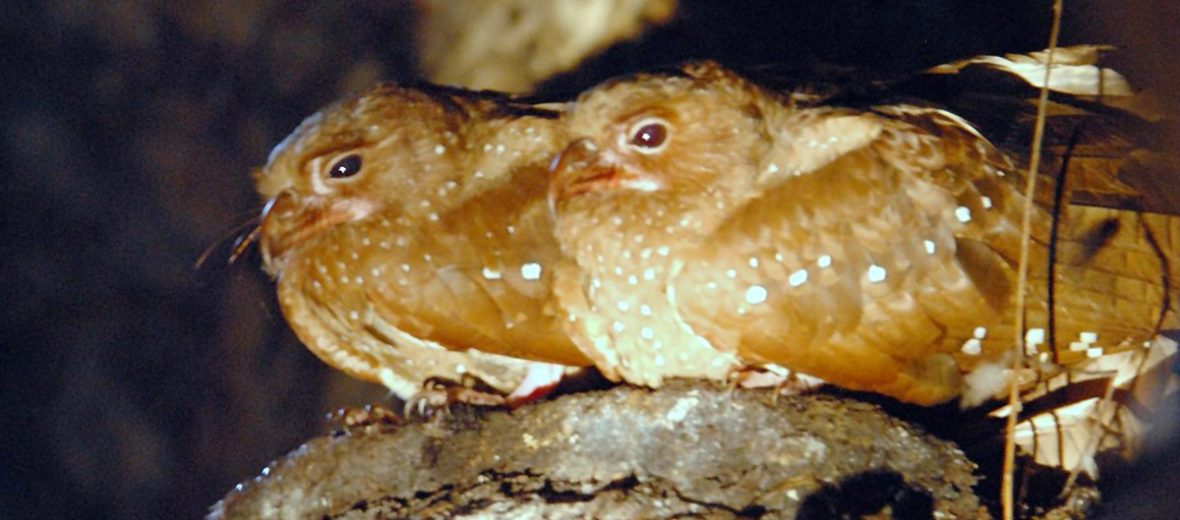
The oilbird, aka guácharo, hails from Central and South America. These birds are cave dwelling critters who’s feet are small and only used for hanging onto vertical surfaces. Oilbirds are related to the nightjar. With approximately 50,000- wild birds in existence, these birds are listed as Least Concern by the IUCN. They only face the threat of habitat destruction.
First the Stats…
Scientific name: Steatornis caripensis
Weight: Up to 13.76 ounces
Length: Up to 19 inches
Wingspan: Up to 37 inches
Lifespan: Up to 25 years
Now on to the Facts!
1.) Oilbirds are nocturnal (active at night).
2.) These birds feed on tropical laurels and palm oil fruits.
3.) They are the only known flying, nocturnal, fruit eating birds. The only other nocturnal fruit eating bird is the kakapo. But those birds are flightless.
4.) Their feathers are soft, but not quite as soft as owls or nightjars.
5.) The oilbird can be found at altitudes of up to 11,200 feet.
But wait, there’s more on the oilbird!
6.) These birds not only roost in caves, but they also take shelter in trees and cliffs that are protected by dense vegetation.
7.) Nests are nothing more than a large pile of droppings (poop).
Did you know…?
Another cool feature of these birds is that they navigate via echolocation, like bats.
8.) Females lay up to 4 eggs that hatch in up to 45 days. The eggs eventually become stained brown, from the droppings.
9.) Chicks can weigh up to 21 ounces by the time they are ready to fledge.
10.) Their foraging range can be up to 150 miles each night!
11.) Owls are their primary predators.
12.) And since you’re probably wondering… “Why do they call them oilbirds?” The oilbird is named so because the young birds are so fat that indigenous people and the early settlers once collected and rendered them down to oil for lighting and cooking.
Now a Short Oilbird Video!
Be sure to share & comment below! Also, check out the Critter Science YouTube channel. Videos added regularly!
Want to suggest a critter for me to write about? Let me know here.
Think you know a lot about critters? Try your hand at these fun, free quizzes:



